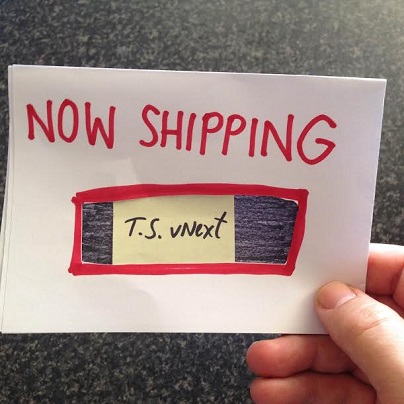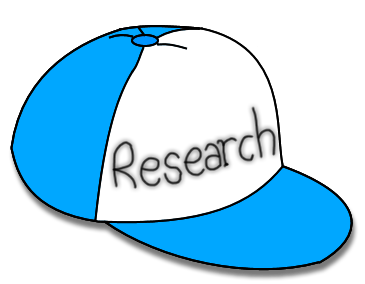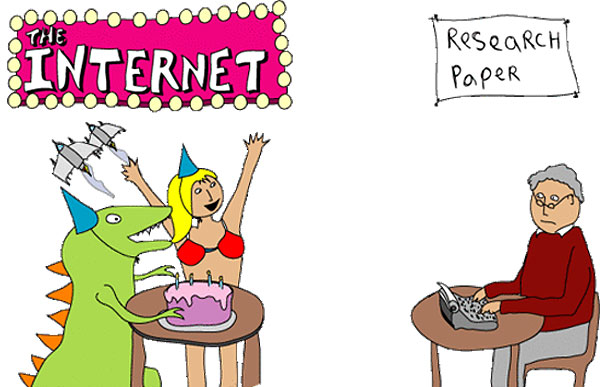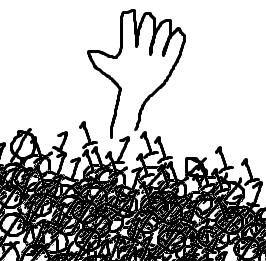How do I know the right thing to work on at any point in time?
When you're a single founder there is an endless stream of things you could be working on.
Bob Walsh, author of "MicroISV from Vision to Reality" called his blog called '47 Hats' because he said there were 47 different roles that a MicroISV founder needs to take on.
You can't work on 47 things at once — so what should you be working on?
There are always exactly FOUR things to focus on:
- Make sure you are focused on item number 3.
- Make sure item number 3 is the most important thing, of all possible things, that you can work on.
- Nothing else
Time spent on anything else, even (particularly!) time spent grooming your backlog of things to do, is time wasted.
I have 2 life-hacks that keep me focused.
Now
Since I live in the command line (powershell in particular) I have a command called now that takes me to the folder in which the current project I should be working on resides. So at any point in time I can type now and go to the right folder.
This sense of what I'm currently working on doesn't change every 5 minutes. I define it as "What is the next thing I'm going to ship?"
Hardware Required
Also, I have a little piece of hardware to help me out.
It's not some fancy pomodoro timer from Kickstarter. It's just a piece of paper that says "NOW SHIPPING" and there is a rectangular hole cut into it:

Visible through this rectangular hole is the name of the next thing I plan to ship.
If I am uncertain for a moment what I should be doing — this piece of paper catches my eyes, stares me down and tells me to keep shipping the right thing.
But if you're astute, and I believe that you are, you may have noticed that so far I've only talked about focus: methods of maintaining focus.
But all the focus in the world is useless if you're focused on the wrong thing. Notice point number 2 above:
Make sure item number 3 is the most important thing, of all possible things, that you can work on.
How do we do that? How do we wade through all of the possible things (without getting hooked in by any of them! focus people!) and choose the right thing?
The right thing is:
What will have the most impact? What will move the needle?
Hmmm. Perhaps I can illustrate this notion of impact with a punchy and awesome pictorial representation.

Yes, that ought to do it. Now go away and work on having impact.
[Drops mic.]
mic: ow!
Ah I see. You're still here.
That impact advice wasn't particularly actionable. Right. OK.
I need to tell you the actual secret secret that lets you determine what actual activity will have the most impact.
If you don't know what will move the needle, what will have the most impact, then there is one and only one thing you should be working on.
Here it is....
The actual secret to startup success.
<Drumroll suspense="high">
…
…
…
…
…
</Drumroll>
<Drumroll suspense="veryHigh">
…
…
…
…
…
…
…
…
…
…
…
…
…
…
…
…
…
…
…
…
</Drumroll>
Research!
If you don't know the right thing to work on, if you have any doubts at all about what will move the needle, then you need to do your goddam research.
It's all research. It's all research all the time.
Don't worry about all 47 hats. Worry about 1 hat.
1 Hat.
All the time.
One damn hat.
The research hat.

How do we do this research thing?
Opportunity is missed by most people because it is dressed in overalls and looks like work.
—Thomas Edison
Sorry to tell you this.... Research is hard work!

I'm going to tell you to do your research and you're going to go away and not do it. Simple.
The reason you're not going to do the research is because research is made out of two things, and both involve toil.
Research = Data + Analysis.
Data? What data? Depending on the phase of your product the data could be information you've laboriously, meticulously and dispassionately extracted from:
- forums
- websites
- articles
- chat logs
- wikipedia
- your competitor's UserVoice page
- any damn place that data is hiding.
If you've already got a product or a website, then the data might also be extracted from:
- your own analytics
- your own surveys
- your support requests
- questionnaires
- campaigns
- error logs
- split tests.
There's so much data out there that you should be drowning in data. Hmm, what's a good graphic for that?

There we go. Drowning in data. A terrified hand emerges from a sea of 1's and 0's. That hand... that is your hand.
Very professional isn't it. I actually did it myself. I was tempted to put the job out to tender amongst a wide range of graphic design professionals. But I'm very happy with the result I've achieved in just a few short hours of toil.
Sales Safari
The master of Research for bootstrapped companies is Amy Hoy, who covers it in detail in the 30x500 course she runs with business partner Alex Hillman. Amy coined the term Sales Safari to cover her highly formulaic process for snooping on and extracting details from customer forums (and any place your customer hangs out), and using this as the first point in product development.
A lot of people talk about doing research, but it's just talk. Amy shows you how it is done. She is a master researcher.
"this girl did more research for this project than i've done my whole life," -- our building contractor totally has my number down
— Amy Hoy April 17, 2015
Safari on Safari
Once you've got your data, then Analysis is the second level of research: the rounds of sifting through the data to find the data within the data.
This stuff, this data + analysis... this is the stuff that products are made from.
This is the wellspring from which all ideas and activities should flow.
So go away and do your research!
[drops mic.]
mic: ow! again.
You're still still here. You need more information on how to do this actual research.
This research stuff is the business. This is the stuff that matters. And you want actual details on how it's done.
Well I have to stop somewhere. I've given you lots of great stuff to get started on. I've shown you places where you can find data. Stop reading start finding.
I'll leave with just one tantalizing piece of advice....
The Perils of Sifting Data
Performing research is all about sifting the data without getting hooked in by the data.
Data is full of distractions. The key to good research is seeing the distractions but choosing not to engage with them.
Homer: Look! A dog with a fluffy tail!

You need to always be sifting and extracting — not getting hooked in.
So good research — and thus good products — are all about defusing from "attention magnets". Focusing on the task at hand. Noticing when you are "fused", caught, hooked.... then stepping back, "defusing" and continuing the analysis.
Obviously, more detail and a boatload of practical examples are in the book I am beaverishly constructorating at this very moment. In fact the book itself is built out of.... data + analysis.
But for now it's "back to the lab again".
My book "Choose Your First Product" is available now.
It gives you 4 easy steps to find and validate a humble product idea.